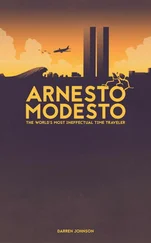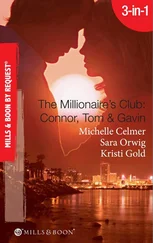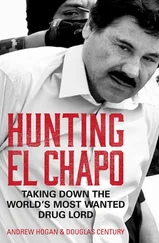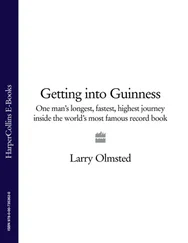After initial treatment to his wounds, Johnston was transferred to a field hospital where the doctor who treated him was none other than Tom Crean. His friend’s treatment proved successful, as Johnston made a full recovery and after serving as a prisoner of war camp commandant, he lived until 1950.
The unexpectedly long duration of the Boer War did not prevent a fourth tour taking place, though in 1899 the venue was Australia rather than South Africa. The squad was captained and managed by the Rev. Matthew Mullineux who had toured in 1896 and was then a member at Blackheath.
Reverend Mullineux was perhaps not the best player around, never receiving an England cap, but he was at least a modest realist. In the first Test against Australia in Sydney, he could not perform to the same level as those around him, and having seen his team soundly beaten by 13–3, Mullineux promptly dropped himself. England international Frank Stout took over as on-field captain for the remaining three Tests, all of which were won by the Lions to give them the first Test series victory in Australia.
The touring party featured representatives from all four home nations, but the star of the side was the sole Welsh international, Gwyn Nicholls of Cardiff, who brought a new dynamism to the position of centre. He ended the tour as top try scorer, with C.Y. Adamson of Durham gaining the most points thanks to his prodigious kicking. On a tour where the Lions won 18 of their 21 matches, scoring 333 points for the loss of 90, Adamson amassed 135 points by himself, a tour record that would stand for many years.
It might seem incredible to modern sensitivities, but just a year after the cessation of hostilities in the Boer War, a Lions squad toured South Africa. The war may have split South Africa asunder, but it wasn’t going to get in the way of the national passion for rugby. And just as the spectacular victory of South Africa in the 1995 World Cup did much to heal wounds in the post-apartheid era, so did the 1903 tour help the normalization process after the Boer War. It also helped that, for the first time, a host country defeated the Lions in a Test series.
Captained by Mark Morrison of Scotland, the 1903 Lions featured internationalists from Scotland, Ireland and Wales, but none from England. Led by Morrison, the forwards gave a good account of themselves, though South Africa’s scrummaging power was beginning to become a mighty weapon. In the backs, however, only Reg Skrimshire of Wales could match the South Africans, whose passing and kicking skills had vastly improved even in the short space of four years.
In the first Test in Johannesburg, South Africa were captained by Alex Frew, who had played alongside Morrison for Scotland in their Triple Crown-winning year of 1901. The Lions had suffered several reverses and injuries in the provincial matches before that first Test, and would go on to win just 11 of their 22 matches on tour. Both the first and second Tests were draws, which set the scene for a tense closing encounter in Cape Town.
Digging out the green jerseys which they had worn in their first victory over the Lions back in 1899, the South Africans were well prepared, but became nervous when a downpour turned the pitch into a quagmire—conditions which were thought to favour the players of Britain and Ireland. Thousands of spectators watched from beneath umbrellas as South Africa persevered with their game plan, which involved their much better backs. Though the Lions had a try disallowed and there was yet more controversy over the winning try by South Africa, which came off a suspiciously forward pass, at the end most people agreed that the home side had thoroughly deserved their 8–0 victory.
The green jerseys were there to stay on South African torsos and the Lions had suffered their first-ever series loss. It was not to be the last, but at least they had a swift opportunity to wipe the slate clean as the very next year saw a tour to Australia and New Zealand. The 1904 squad was again captained by a Scot, the remarkable David ‘Darkie’ Bedell-Sivright, a veteran of the 1903 tour and the only man from that squad to play again for the Lions the following year.
Bedell-Sivright was a swarthy individual, a fearsome forward, and a real character on and off the field—he was alleged to have rugby tackled a cart horse. He once stated: ‘When I go on to the rugby field I only see the ball, and should someone be in the road, that is his lookout.’ He was very popular with the Australians and he loved them and their country, staying on for a year after the tour before returning home to study medicine. He was not enamoured of Australian referees, however. In the match against Northern Districts, Denys Dobson of Oxford University was sent off by the local referee, one Hugh Dolan. His offence was to say ‘What the devil was that for?’—a near-blasphemy to Mr Dolan who ushered Dobson from the field, thus making him the first Lion ever to be sent off.
Bedell-Sivright intervened on behalf of his team member and the Lions left the field, returning after 20 minutes without Dobson but ready to thump the home side, which they did 17–3. In interviews after the match, the Lions captain explained his stance to reporters: ‘He [Bedell-Sivright] regarded Mr Dolan as an incompetent referee. The team had borne with his incapacity so long as it merely affected them in their play, but when he chose to take up a position which reflected on their personal honour, they thought it time to show their resentment.’
An inquiry was held by the New South Wales Rugby Union and no action was taken against Dobson for his ‘improper expression’. It was a whitewash by officialdom—and not the last time this would happen with the Lions.
Bedell-Sivright’s side featured internationalists from all four home countries as well as two New Zealanders, medical students Pat McEvedy and Arthur O’Brien. Paddy Bush of Cardiff, a brilliant fly-half, marshalled the outstanding Welsh backs of the time. The Lions duly swept all before them in Australia, winning every one of their 14 matches, including the 3 Tests by a combined score of 50–3.
It was a different story entirely in New Zealand, where the Lions cause was not helped by Bedell-Sivright breaking his leg in the first match at Canterbury. The low point of the tour was the only Test against New Zealand, in which the Lions suffered their first defeat by the nation who would come to haunt them in the decades ahead. It was a case of dominant home forwards beating inventive Lions backs, which would also be a regular occurrence in the history of the tourists. Captain Bedell-Sivright remarked patronizingly that the colonials would not dare to come to Britain: ‘you might succeed occasionally against local underdog teams…but would be out of your class against national combinations,’ he is reported to have said.
How wrong could he have been. In retrospect, that 9–3 victory was the beginning of the rise of New Zealand rugby which would reach full glory the following year with the 1905 tour to the ‘old countries’ and the start of the All Blacks legend.
Both the principals in that notorious sending off, Dobson and Bedell-Sivright, would meet strange ends. The former was killed by a charging rhinoceros in Africa in 1916, while Bedell-Sivright died from an infected insect bite during the Dardanelles campaign in the Great War.
After tours in successive years, the next Lions did not leave home shores again until 1908, when Arthur F. ‘Boxer’ Harding, a 1904 tourist, captained the squad on its visit to Australia and New Zealand. In one way this was the least representative squad to tour in the 20th century, as only players from England and Wales featured. Scotland had fallen out with the RFU over the issue of New Zealand paying three shillings a day in expenses to its players on their 1905 tour to Europe.
Читать дальше












